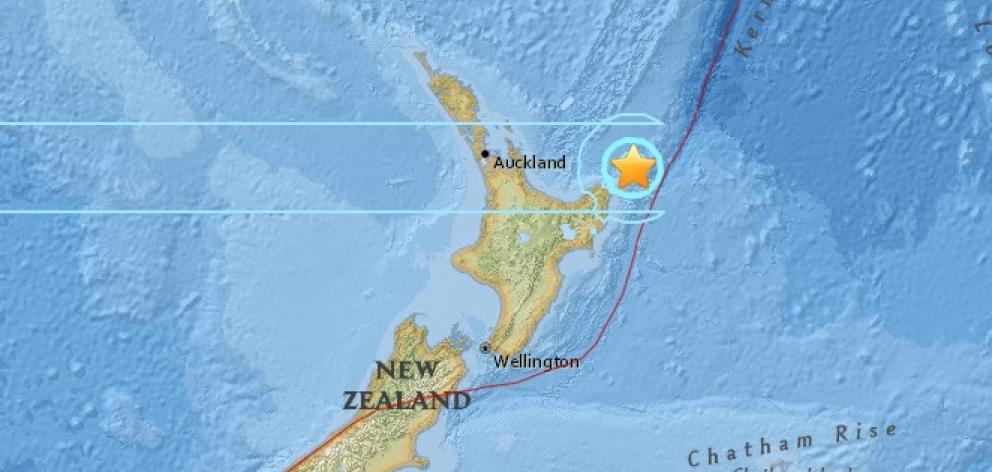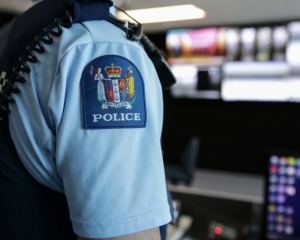Aftershocks are continuing and there are reports of damage to homes following a 7.1 earthquake that struck off the North Island's east coast this morning.
The quake hit at 4.37am, about 100km northeast of the East Cape settlement of Te Araroa, at a depth of 19km, USGS said. There were no reports of injuries, but there has been damage to some properties in the region.
It was felt by tens of thousands of people throughout many parts of the North Island, with people being woken as their homes shook and items fell to the floor. At least 100 aftershocks had been felt.

The quake was the biggest to hit the area in a decade, lasting nearly a minute, and cut power to about 1000 homes in Eastern Bay of Plenty this morning.
Horizon Energy network general manager Derek Caudwell says the power outages were further compounded by a car crash just before the quake at Edgecumbe about 2.30am.
People were reporting finding cracks in walls of their homes and damage to some private water supplies in the Gisborne region.
Anton McKay, who lives in Patutahi, 15 minutes from Gisborne, told the New Zealand Herald he's now in clean-up mode.
"There's big cracks in the ceiling beams, about 40cms long. There's also cracks in the walls and the water tanks are hammered.
"The tanks have got cracks in the top and bottom, and they're both leaking water. They'll need to be replaced."
Mr McKay said there was also cracks in his kitchen cupboards and drawers, and dishwasher.
"The kitchen's warped. The cupboards and drawers are buckled, and heaps of the glasses and plates are smashed."
He said he felt everything cracking during the quake.
Gisborne mayor Meng Foon said contractors and council staff would be out today checking all infrastructure, including power, phone lines, roads, bridges and water pipes.
A spokeswoman for Insurance Council New Zealand said no significant damage had been reported to the authority.
Gisborne's Chamber of Commerce wasn't aware of any shops or businesses being damaged.
House was 'rocking'
Te Araroa resident Amohi Cook said she and several other residents had huddled in their vehicles on hills above the township this morning.
"I woke up about 4.28am, looked at the clock and the house was rocking.
"It was one of the freakiest ones I've ever felt. The local [Department of Conservation] man called up by husband, who is the chief of the Te Araroa fire brigade, and he went and set the alarms off three times to get everyone up."
East Coast MP Anne Tolley said it was one of the strongest quakes she had ever felt.
Gisborne resident Chris Braybook posted on the Gisborne Herald's Facebook page that his house had a crack in the side of it.
Tairawhiti Emergency Management Group is discouraging people from going out in boats, they are also advising people to stay off beaches, out of the water and away from rivers, streams and estuaries in vulnerable areas for at least 24 hours.
Te Waka O Rerekohu Area School in Te Araroa, Tolaga Bay Area School and Waikirikiri School in Gisborne are closed today.
Tsunami alert lifted
Shortly after 6am a potential tsunami threat was upgraded to a warning by Civil Defence. All tsunami warnings for coastal areas were lifted after 8am. Civil Defence said based on available data, the greatest tsunami threat had passed.
However, people living in coastal areas should be aware that tsunami currents and surges were possible. The warning covered the East coast of the North Island, including Auckland, Waikato and Bay of Plenty and the upper South Island.
"It's likely we'll have aftershocks in the coming days and update people as things progress."
WeatherWatch described the series of quakes, which began with the 7.1 magnitude shortly after 4.30am and followed with a series of moderate and weak quakes over a span of about 20 minutes as a "rolling earthquake."
Head analyst Philip Duncan said the quake was so strong it was felt in Wellington at the bottom of the North Island. Plenty of Aucklanders felt the quake, something he said was unusual.












